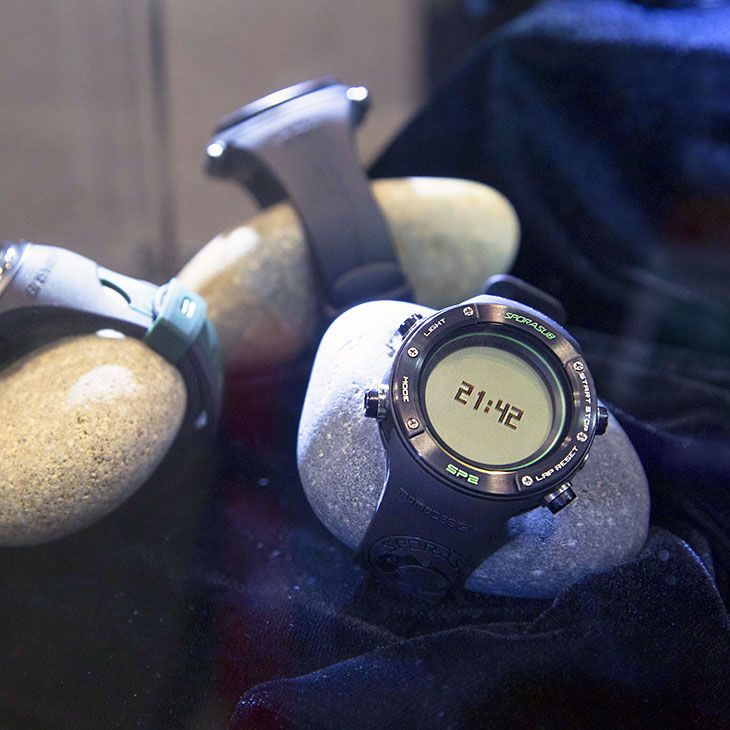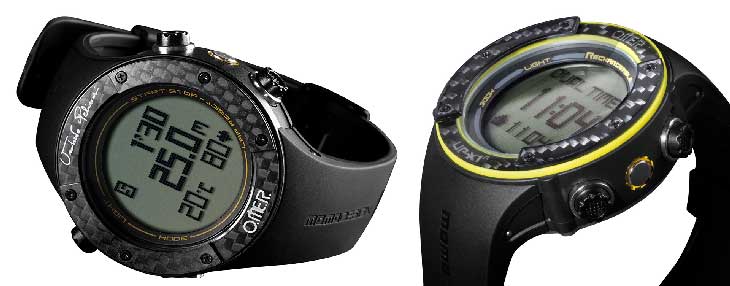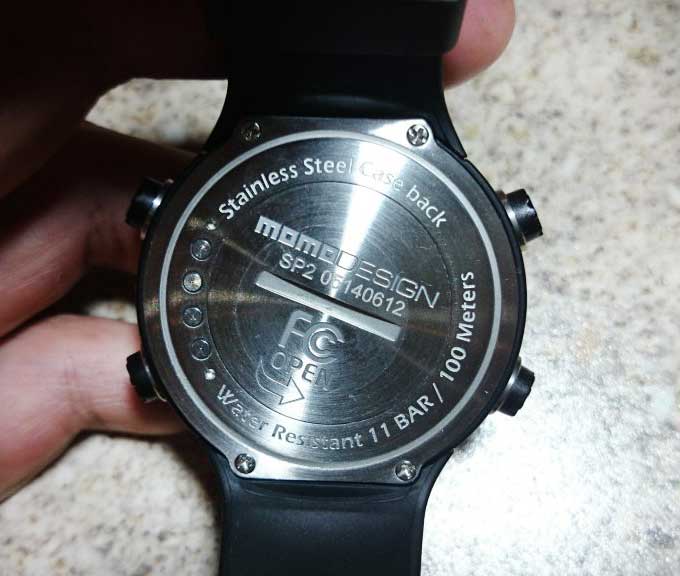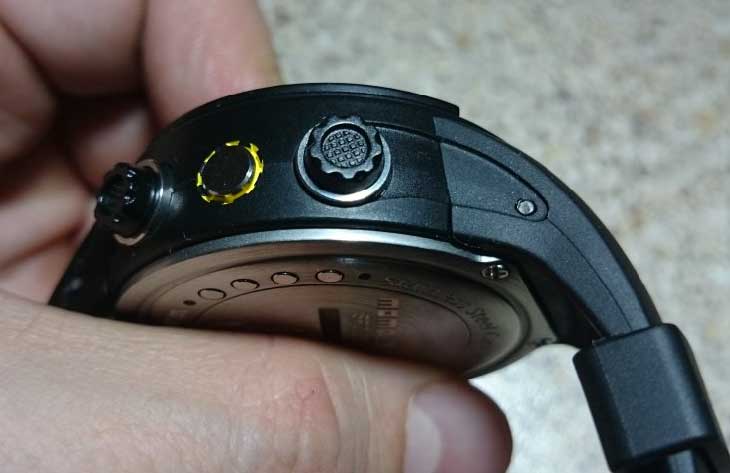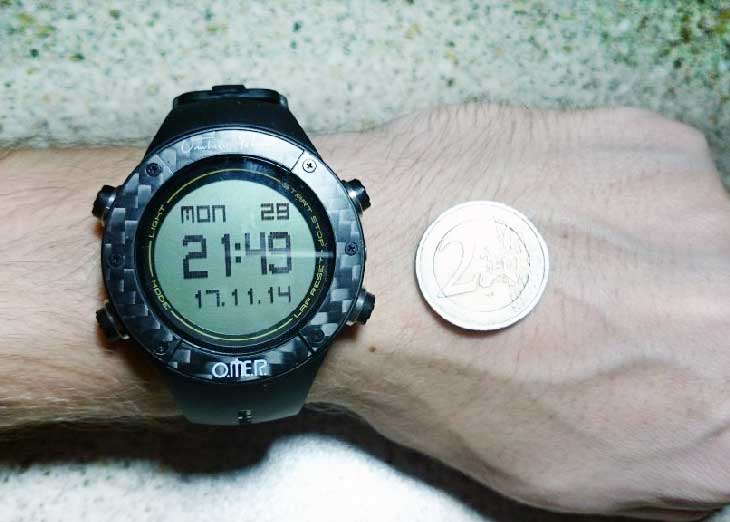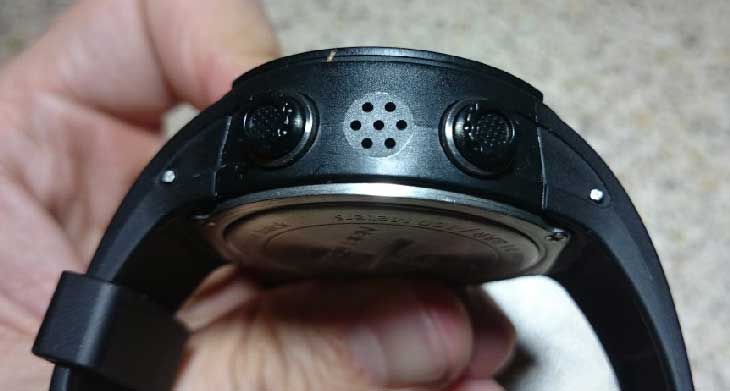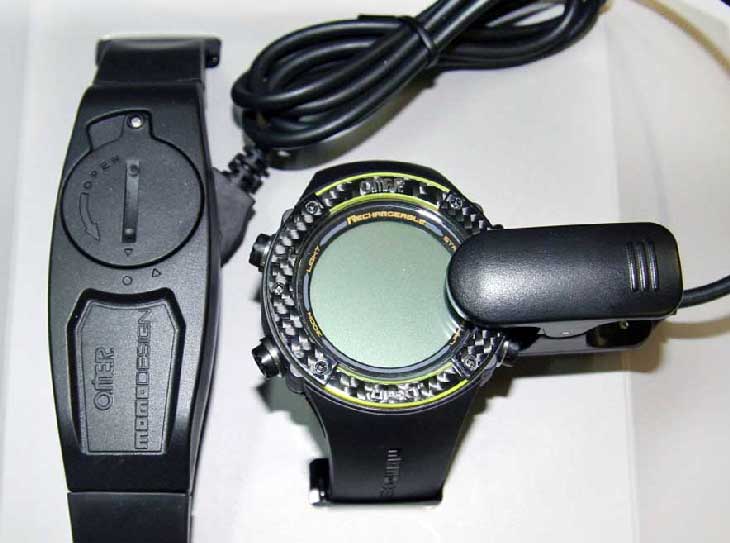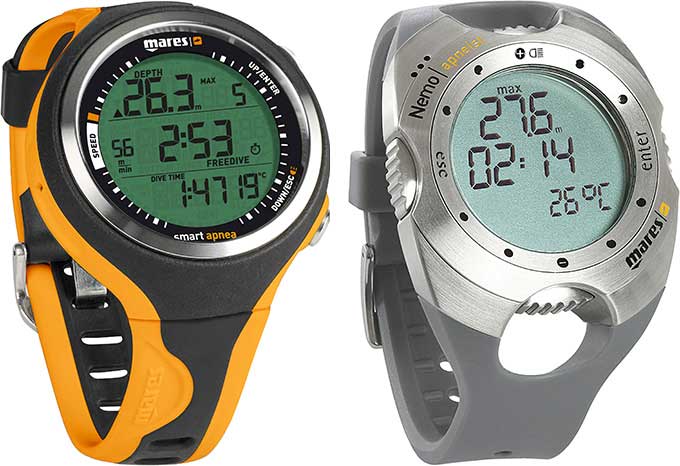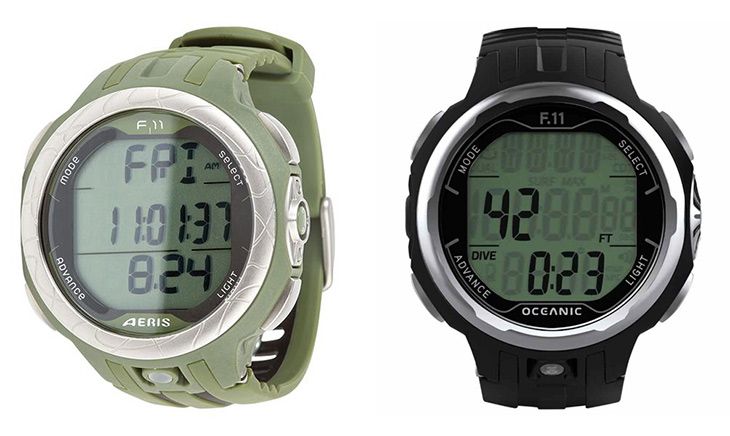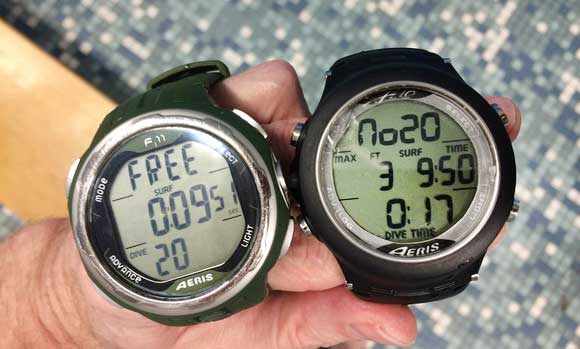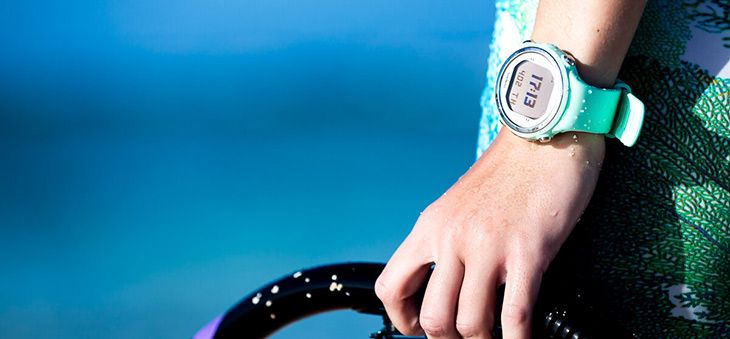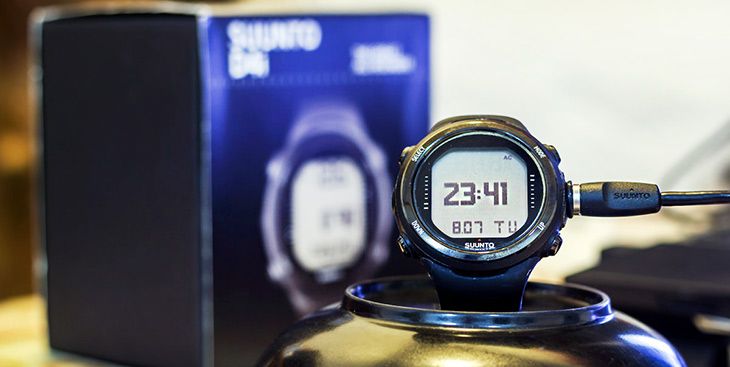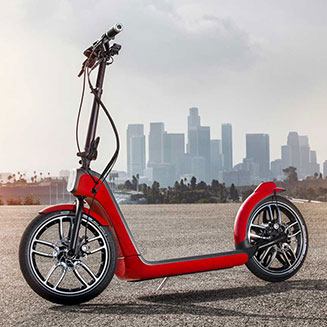A freediving computer is quite an expensive tool that’s not easy to choose, given that even $600 models often fail to meet all the criteria of a freediver. In fact, there is no perfect model that satisfies every diver 100%. This review of freediving computers will help you choose the model that best fits your specific needs from among those designed for breath-hold dives.
Below is a detailed review of the 5 best freediving computers based on user feedback: Cressi Drake, Omer UP-X1R, Mares Smart Apnea, Suunto D4i Novo, Aeris F11.
This article is completely based on feedback from freediving and spearfishing forums around the world and is carefully systematized. After a month of studying the diving community, I developed clear criteria for the ideal underwater computer for breath-hold diving.
Features of the ideal freediving computer:
- Instant activation of underwater mode (1 second) without pressing buttons in advance.
- Sampling rate from 1 second.
- User-replaceable batteries without the need for a pressure chamber, or a rechargeable battery.
- Vibration alerts (unfortunately, vibration requires free internal space that would compress under pressure and could damage the computer. Developments in this area are ongoing but not yet widely implemented).
- Rest/dive intervals that automatically adjust to the time spent in the water.
- USB cable included in the package.
- Simultaneous display of water time and surface countdown (for self-calculation of rest intervals between dives).
- Audible alerts with volume and interval settings, loud enough for a freediver in a wetsuit hood.
- Minimal need for underwater button presses on the computer.
- A detailed “logbook” viewable without a PC: second-by-second depth graph, ascent and descent speed, surface interval, dive time, water temperature, heart rate, etc. (some data simply cannot fit on the display of freediving computers).
- Large memory capacity and the ability to delete data manually without connecting to a laptop or PC.
- Reliable heart rate monitor operation.
- Effective functionality for pool training (quick activation at submersion, depth measurement accuracy, 0.25-second sampling rate).
- Easy menu navigation.
- Battery-saving mode.
- Ergonomics: compact size, thin-bezel display, lightweight, glove-friendly buttons, scratch- and impact-resistant, adjustable screen backlight with automatic mode.
- Online technical support and regularly updated firmware with graphical data display.
- Air/water temperature readings.
It is worth noting that choosing a freediving computer based only on marketing specifications is unwise—you should study the manuals of any potential models before making a purchase. This will make your decision much easier.
Freediving Computer: Cressi Drake (from $265)
A 100% freediving and spearfishing computer with a swimming pool training program that other computers often lack. As of now, there are no full equivalents of the Cressi Drake. It was produced by one of the most authoritative diving equipment manufacturers in the world and the oldest—Cressi.
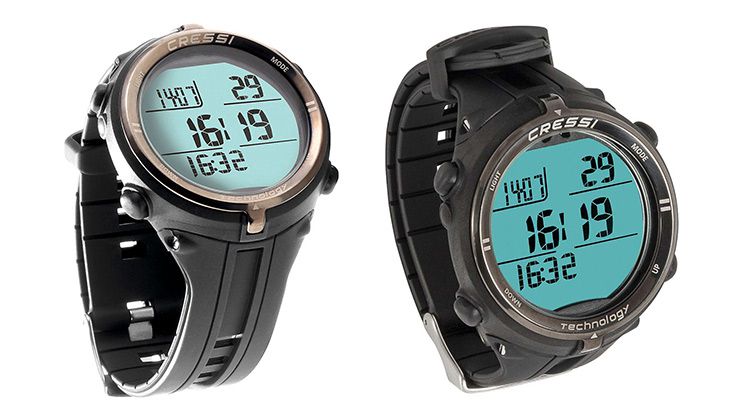 Cressi Drake Freediving Computer
Cressi Drake Freediving Computer
I couldn’t find a single negative review or complaint, except for a minor gripe such as “the screen shows too much information.” Personally, I found the manual a little inconvenient.
Main features and capabilities of the Cressi Drake:
- “Watch” Mode: 12/24-hour format with minutes and seconds; calendar; multifunction stopwatch; dual time zones; multifunction alarm.
- “Underwater Computer” Mode includes four specialized freediving programs: FREE and PRO for diving, STATIC for breath-holding sessions, and DYNAMIC for dynamic training.
- The FREE program is recommended for spearfishing. It’s also great for snorkeling and active shoreline or deep apnea swimming.
- The PRO program is designed for advanced freedivers practicing deep dives and aiming to improve their performance for competitions. It is also suitable for deep-sea spearfishing.
- Addition of RECOMMENDED RECOVERY TIME (recommended rest time) and TR TIME RATIO (nominal time) for FREE and PRO programs to ensure safe freediving during deep dive sessions.
- The DYNAMIC program is designed for athletes practicing dynamic freediving as a discipline or as training to improve overall performance. Suitable for advanced snorkeling, alternating active swimming along the shore with deep apnea.
- The STATIC program for static apnea is aimed at breath-holding practice and improving one’s performance.
- Addition of REPS for STATIC and DYNAMIC programs to create and remember training tables, both normal and enhanced.
- Full signal parameter customization for time, depth, number of dives or laps, with a total of 36 signal settings available. Option to upload signal settings, reset signals. Both sound and light (visual) signals are available.
- Ability to automatically backlight the display at depth.
- Freshwater/saltwater compatibility.
- Water/air temperature monitoring.
- Sampling frequency from 1 second. Option to set the sampling frequency.
- User-replaceable battery.
- Session logbook.
- History function for each mode separately.
- Switching measurement units.
- Recommended surface time is calculated automatically/customizable.
- PC/Mac interface with main data and dive profile. Stores overall data for the last 60 sessions with a total dive duration of up to 15 hours, depending on the set sampling frequency (from 1 to 4 seconds). When the number of sessions reaches 60, the earliest sessions start automatically erasing from memory (i.e., your achievements continue to be recorded, overwriting the oldest data. For most computers, everything resets or stops recording).
- Countdown timer, stopwatch.
- Depth sensor calibrated for salt or fresh water (recommended depth in fresh water is approximately 3% less); maximum depth 0-120 m; accuracy: +/- 1% (T 20°C) 10 cm (from 0 to 100 m)/1 m (from 100 to 120 m)/1 ft (from 0 to 316 ft).
- Thermometer: -5 °C to +40 °C; accuracy: +/- 2 °C/10 min temperature change rate. Materials: titanium, stainless steel, elastomer strap, plastic body. Buttons made of glass-filled nylon, scratch-resistant mineral glass.
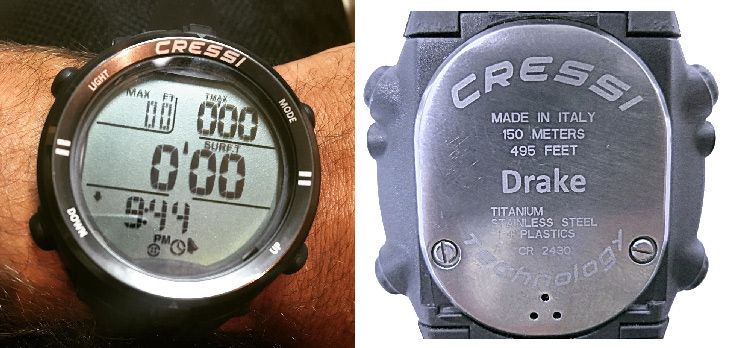 Freediving Computer Cressi Drake
Freediving Computer Cressi Drake
Advantages of the Cressi Drake Freediving Computer:
- Long strap.
- Can be used as a waterproof watch, without automatic wet activation.
- User-replaceable battery.
- High screen contrast.
- Responsive customer support.
Disadvantages:
- Signals are barely audible in a 7 mm wetsuit.
- No automatic wet activation, which is related to the presence of several “wet” modes, including for pool training.
- Cable is ordered separately, but the entire logbook can be viewed on the watch itself.
- Minimum temperature -5 °C, which may not be enough for underwater hunters.
- High screen contrast.
- Issue with maximum dive time and its solution .
Unboxing and Setup of the Cressi Drake Titanium Freediving Computer
Omer UP-X1R Diving Computer with Rechargeable Battery (from $308)
The Omer UP-X1R freediving computer (2015) is a technical clone of the Omer Sporasub SP2 (approximately $50 more expensive), featuring a heart rate monitor, additional settings provided by freediving champion Umberto Pelizzari, and a specific design. The manual for the Omer UP-X1R can be downloaded from the official website omersub.com .
Features of the Omer UP-X1R:
- In “Watch” mode: hours, minutes, seconds; calendar until the year 2099; 12/24-hour format; alarm; dual time zone.
- Heart rate monitoring: encoded data transmission at 5.3 kHz frequency; heart rate range: from 30 to 240 beats per minute; adjustable alerts. Water/air temperature: range in Celsius -20/+70; in Fahrenheit -4/+158 (accuracy 0.1).
- “Diving Mode”: automatically activated freediving mode from a depth of 1 meter; maximum dive depth 100 m/328 ft; resolution 0.1 m/ft; memory for 250 dives and 16,000 logs; maximum dive/surface session time 100 minutes; selectable saltwater/freshwater; adjustable sampling time 1/2/5/10 seconds; manual customization of all signals; alerts upon reaching a set depth.
- Chronograph mode for monitoring dryland training.
- Countdown: 24 min. in 00:00:00 format; signal every minute in the last 10 minutes, every 10 seconds in the last minute, every second in the last 5 seconds; 30-second signaling after zero.
- Archive: all dives, daily dives + data summary (heart rate, calories, dive time, max depth, temperature); manual data deletion (all or daily).
- Compatible with the Dive Master software.
- Backlight can be turned on manually.
- Adjustable display contrast.
- Personal information input.
- Metric system selection.
- Power-saving mode and sleep mode.
- Included in the package: computer, heart rate monitor, cable, and monitor straps.
Advantages of the Omer UP-X1R Computer:
- The watch has a very long strap designed for wetsuits of any thickness.
- Large buttons are easy to press even in diving gloves.
- Operates flawlessly even at 140 meters.
- Large font size.
- Simple menu navigation, easy to understand without a manual.
- Fairly high depth measurement accuracy - deviation in a pool is 20 cm.
- A good log-viewing program with graphs.
- Comes with a full set of accessories.
Disadvantages:
- Signals are barely audible underwater, and they are completely muffled when wearing a wetsuit hood.
- When the memory is full, the computer does not overwrite old data; you constantly need to remember to clear the memory of the Omer UP-X1R dive computer.
- The carbon overlay peels off, decorative screws fall off, and the edges snag on the wetsuit.
 Omer UPX1R disadvantages
Omer UPX1R disadvantages - The heart rate monitor can detach from the chest due to compression, causing gaps in measurements (a common issue for all monitors due to natural factors). It’s nearly impossible to find the cable for sale, so it’s critical to handle it carefully and ensure it doesn’t get lost.
- Customer support does not respond to any questions or comments online.
- Too fragile for spearfishing: impractical sharp edges for the sake of design and buttons that protrude excessively, snagging onto the wetsuit and everything else.
- The strap cannot be replaced.
- Inert temperature sensor.
- The material of the device’s glass is not specified.
Mares Smart Apnea Freediving Computer (from $239)
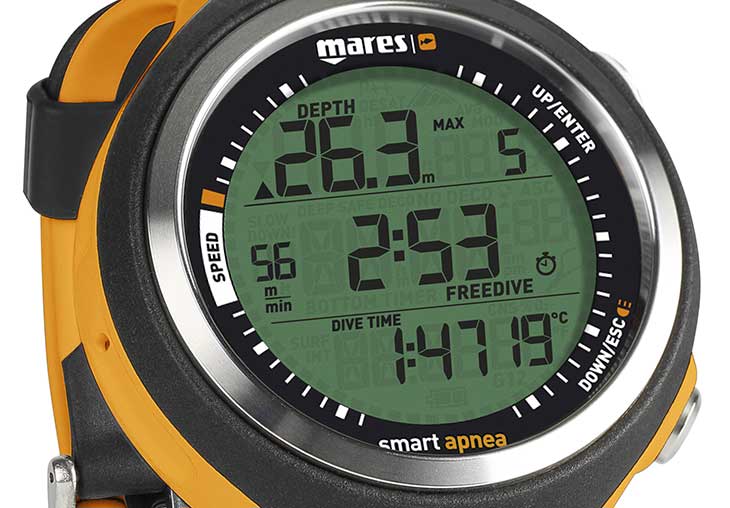 Mares Smart Apnea freediving computer
Mares Smart Apnea freediving computer
A model that replaces the very simple and successful Mares Nemo Apneist (which featured a water-activated function and an indestructible case).
Features of the Mares Smart Apnea Freediving Computer:
Operating modes of the Mares Smart Apnea:
- “Watch” mode: a dry mode where the computer functions as a regular watch with the ability to view the logbook, plan dives, connect to a PC, adjust time zones, backlighting, air temperature, date/day of the week/time.
- “Dive” mode operates in three variants:
- “Pre-dive”: atmospheric pressure is recorded to start depth measurement during the dive (this mode activates at a depth of 1.2m); it must be manually set—pre-dive mode. The watch stays in this mode for only 3 minutes, then reverts to dry mode. If the pre-dive mode is not turned on, recording begins automatically after 20 seconds.
- “Dive” mode.
- “Surface” mode: this mode activates automatically when rising to 0.8m from the surface.
- “Sleep” mode.
- All diving parameters are customizable: warning signals can be disabled/adjusted, alerts for reaching a specific depth can be set alongside intervals of traveled meters, surface interval duration, 6 independent depth signals, ascent/descent speed limit, hydration reminders, minimum surface interval calculation by formula.
- Water density setting: saltwater/freshwater.
- Metric system selection.
- Backlighting is manually activated, and its duration can be set from 1 to 10 seconds.
- Dive log stores about 20-30 hours of dives, depending on the number of sessions. Three different sampling frequencies: 0.25s, 0.5s, or 1s. Information in the onboard log consists of an overall summary, session summary, and individual dive details.
- The PC connection cable (USB clip interface) is ordered separately. Dive Organizer/Divers Diary software. Most information is displayed on the screen.
- The battery can be self-replaced, with detailed instructions provided in the User Manual. The original battery should last approximately 200 hours of freediving (around 2 years).
- The Mares Smart Apnea computer has two buttons.
- Stopwatch.
- Countdown timer.
- Dive duration.
- Technical specifications:
- Mineral glass.
- Replaceable strap.
- Maximum depth: 150m.
- Resolution: 10cm.
- Temperature measurement range: -10 to +50 degrees Celsius, accuracy +/- 2 degrees.
- Depth measurement accuracy: 80%.
- Display diagonal: 1/4 inch.
Disadvantages of the Mares Smart Apnea:
- The elastomer strap looks cheap and is too short for a winter wetsuit (relevant for divers).
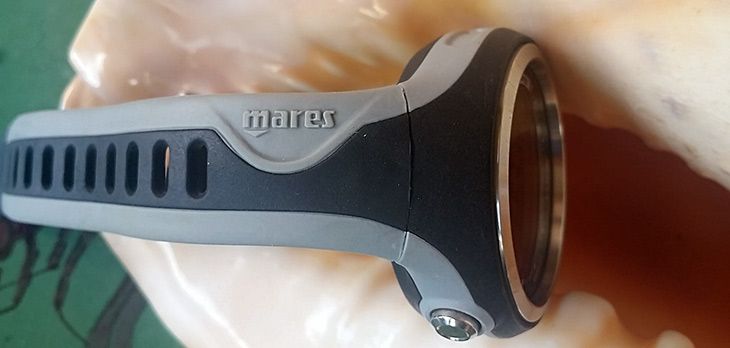 Mares Strap
Mares Strap - Very expensive cable not included in the set, and diving data can only be analyzed on a PC screen.
- Records only 9 dives per day.
- Signals are very quiet.
Pros:
- Thoughtful buckle design that prevents accidental unfastening in the water.
- Set the interval between dives.
- Convenient and informative Dive Organizer software.
- Minimal visual details and buttons.
Aeris F11 (Oceanic F11) Dive Computer (from $450)
This is an evolution of the F10 model. One of the most popular freediving computers in the world, made in the USA. The latest firmware has fixed all conceivable and inconceivable bugs, with tremendous work done on the software internals of the Aeris F11 computer compared to the previous F10. The Aeris F10 was one of the most praised freediving computers and also rarely had issues, but its firmware is no longer updated, and it’s difficult to find it in stores. Aeris and Oceanic are the same manufacturers; the F11 models are now released under the Oceanic brand.
Since this is a very popular computer, there are plenty of video reviews, unboxings, battery replacement tutorials, and water tests.
Features of the Aeris F11 Freediving Computer:
- Four control buttons.
- Operating modes: clock mode and freediving mode. The computer switches to freediving mode upon reaching the set starting dive depth (preset at 0.6, 1.2, or 1.8 meters for 1 second).
- Logbook on PC: Connects to a PC via a special cable and USB port. The software and USB driver are provided on the AERIS Product CD or can be downloaded from the AERIS website, where the user manual is also available for printing. From the PC, you can download data from the dive computer, such as dive number, surface interval time, initial depth, ending depth, maximum depth, dive duration, dive start date/time, minimum temperature, sampling rate, dive profile, and dive settings.
- Sound alerts: The LED display warning signal, located at the 6 o’clock position of the case, is synchronized with the sound signal. It flashes while the signal is active and turns off once the sound stops. Both the audio and LED signals will not work if sound alerts are disabled in the settings. Different events trigger different sound signals.
- Screen backlighting and auto-backlighting.
- Powerful 3-volt lithium battery CR2450.
- Countdown timer.
- Alarm clock.
- Customizable time and date formats.
- Stopwatch.
- Adjustable surface recovery time.
- Modes for pool training.
- Configurations: water type, sampling frequency, wet activation time, backlight duration, auto-backlight, dive-start depth, surface interval, and more.
- Logbook: Daily logbook » Full logbook » Daily history » Complete history. The computer can store information about the last 99 dives.
- Dive mode activation: Automatically—when in contact with water and upon reaching the DSD depth for 1 second. When in clock mode, the dive mode won’t activate if wet activation is turned off. It doesn’t function as a dive computer above 4,270 meters altitude. Returns to clock mode two hours after being in surface mode following a dive.
- Alerts: Countdown timer, alarm clock, low battery, surface recovery, depth/time repetition interval, depth alerts.
- Full kit includes: computer, CD, cable, winter wetsuit strap extension, protective screen film, screwdriver for replacing the battery, and instruction manual.
Comparison: Aeris F10, Suunto D4i Novo, and Aeris F11
Advantages of Aeris F11:
- Good battery life.
- Option to set a flashing backlight instead of a sound signal.
- Adjustable signal duration.
- Wet activation without pressing buttons (1 second).
- The backlight button is more conveniently placed compared to the F10.
Disadvantages:
- You need to press a button to see detailed information immediately after a dive session. In the F10 version, dive time/maximum depth/dive count data is displayed automatically (this might have been fixed in the latest firmware).
- Quiet signals (some users even complain they’re too loud!).
- No temperature sensor.
- Check if the cable is included in the set.
Suunto D4i (Novo) Dive Computer (from $400)
The most well-known (highly promoted) computer for freediving and scuba diving comes from Finland. The predecessors of the Suunto D4i have proven themselves well (D4, Moskito). This model offers more scuba diving modes, expanded memory, a new cable with faster data transfer, a digital pressure sensor, underwater stopwatch functionality, a simplified menu, and many other minor, including cosmetic, changes. The Suunto D4i and D4i Novo have identical features and capabilities.
Interactive self-study guide for the device.
Training videos from Suunto.
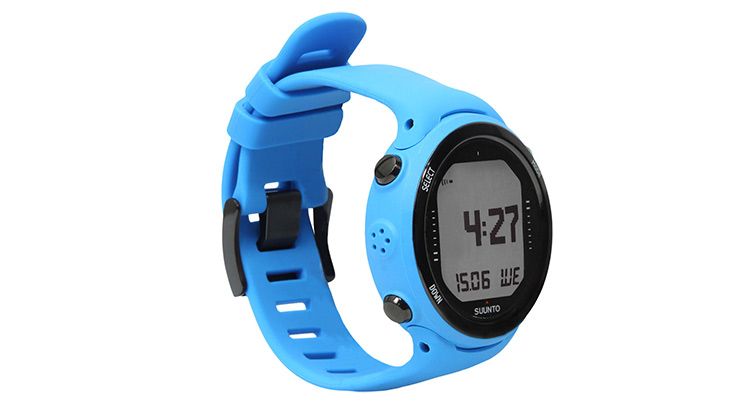 Suunto D4i Novo Freediving Computer
Suunto D4i Novo Freediving Computer
Features of the Suunto D4i Freediving Computer:
- Four modes: TIME (time), DIVE (dive), PLANNING (planning), and MEMORY (logbook). If the DIVE (Dive) mode is not turned off, the Suunto D4i automatically switches to DIVE mode when submerged underwater to a depth of 1.2 meters.
- Every time the Suunto D4i switches to dive mode, a series of automatic checks occur. All graphic display elements are activated, the backlight turns on, and an audio signal is emitted. The display then shows the current altitude, personal settings, maximum operating depth, breathing gas composition, and PO2 value. The battery charge level is also checked.
- Audio and visual alerts with various types and sounds.
- Stopwatch, including in dive mode.
- Breath-hold timer with adjustable ventilation time, repetitions, and intervals.
- Display and adjustment of ascent speed.
- Adjustable backlight.
- Bookmarks in the dive log.
- Calendar.
- Temperature. Resolution of 1°C, accuracy of +/-2°C.
- Depth range up to 300 meters, with a resolution of 0.1 meters up to 100 meters.
- Time/date with format settings, dual time zones.
- Measurement unit customization.
- Alarm clock.
- Adjustable display contrast.
- Dive archive for 999 sessions and 100 hours. The counter resets automatically when these values are reached.
- Informative onboard logbook. In freediving mode, the maximum memory capacity is 35 hours.
- Personal settings and altitude adjustments.
- Safety stops and deep stops.
- Logging interval options in freediving mode: 1, 2, and 5 seconds.
- Every time the Suunto D4i switches to dive mode, it performs a series of automatic checks. All graphic display elements are activated, the backlight turns on, and an audio signal is emitted. The display then shows the current altitude, personal settings, maximum operating depth, breathing gas composition, and PO2 value. The battery charge level is also checked.
Drawbacks of Suunto D4i:
- Many freedivers encounter problems with the strap (“fragile” polymer, the buckle breaks). Replacing the strap costs $40, and some resourceful divers make homemade straps .
- The wet contact cannot be disabled, so it’s impossible to simply use the watch without engaging the dive mode to save battery life.
- No saltwater/freshwater mode.
- The Novo model includes a cable; the D4i does not.
- Battery replacement is only performed at a service center (users replace it themselves after the warranty expires, with several YouTube tutorials available).
Advantages:
- Very loud signals.
- Suitable for pool training.
